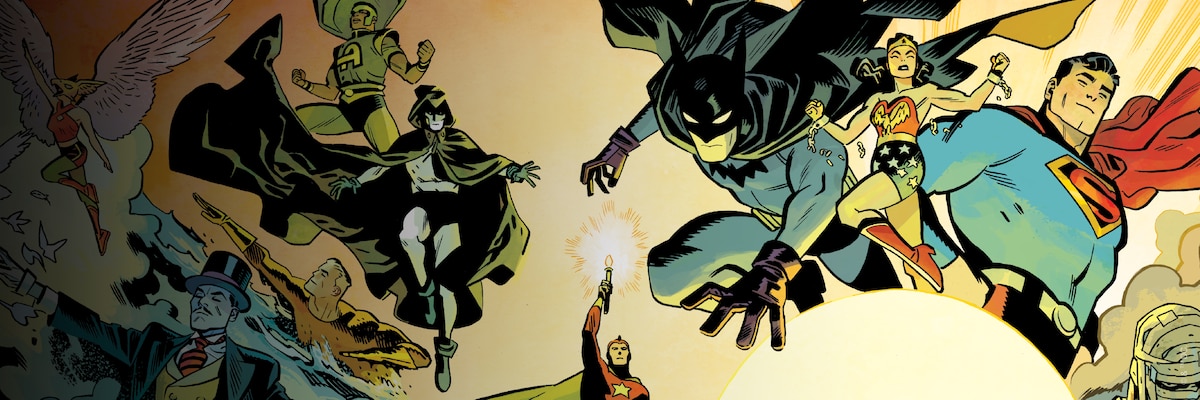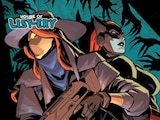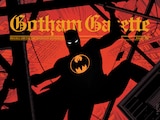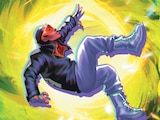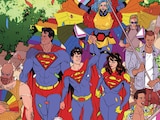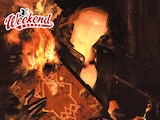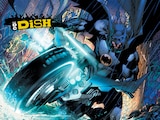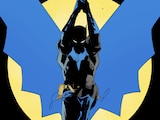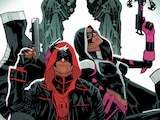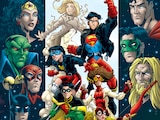Creating a comprehensive history of the DC Universe is no easy task. With a constantly shifting order of events, continuity reboots and new Crises happening all the time, keeping up with it all is a full-time job. And right now, that job belongs to Mark Waid. With his dizzyingly thorough New History of the DC Universe launching this week, Waid and his all-star team start at the very beginning of the universe to today, displaying every era of heroism in between. How exactly did he pull it off? What were the choices a historian of this caliber has to make? And what surprises might we anticipate along the way? In the spirit of New History’s own mission statement to present us with the world, we sat down and got all the answers from the man himself.
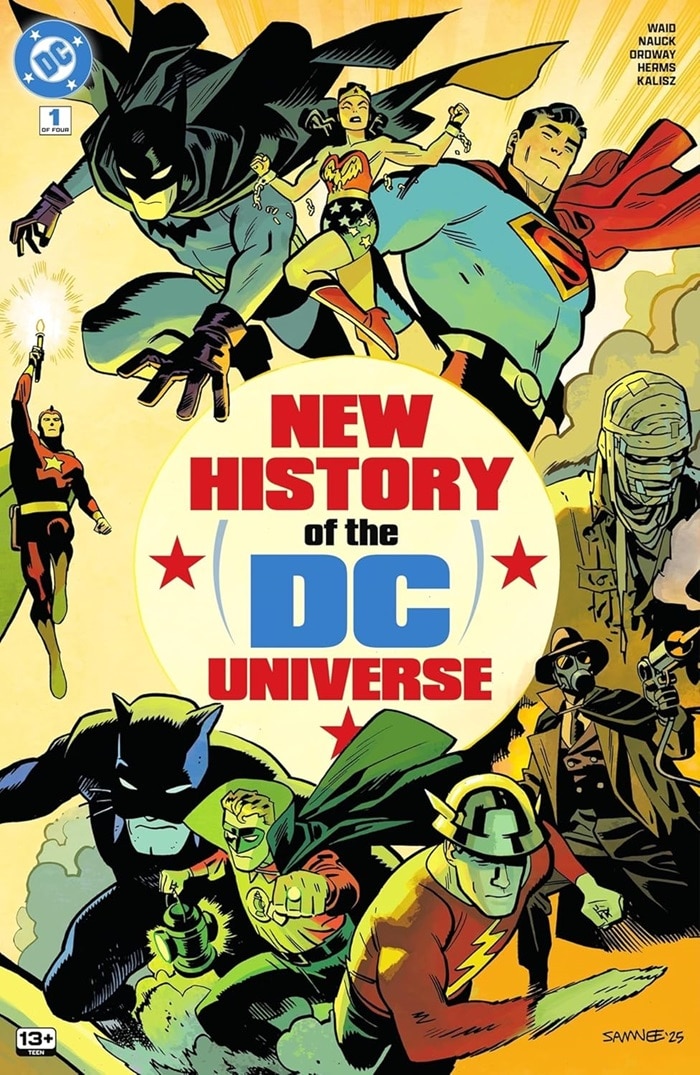
The amount of notation work that went into this is truly impressive. What can you tell me about the research process for New History of the DC Universe?
Let me first say that without the help of Dave Wielgosz, superfan John Wells and editors Andrew Marino, Brittany Holzherr and Marquis Draper, I never would have been able to live through this. For these first two issues especially, Dave and John were my backstops to make sure we didn't overlook anything crucial.
You asked about the research process? Sit down, make yourself comfortable. I hope you brought a sandwich.
For each issue, I began by constructing the timeline used as the backmatter. That way, I was (a) more likely to not overlook anything, and (b) could then cherry-pick the most important characters and events and/or the most visually dynamic ones to create the script for the illustrated section.
For issue #1, which takes us from the Dawn of Time to the explosion of Krypton, I mined my own collection, scoured the internet's various sources (special shout-outs to The Unauthorized Chronology of the DC Universe and CosmicTeams.com!), and brought all the events and characters together to create a master document that was originally thirty-seven single-spaced pages long. Just for issue #1. After that, it was "just" a matter of ironing out contradictions and errors and winnowing it all down by about 50% to hit the key entries.
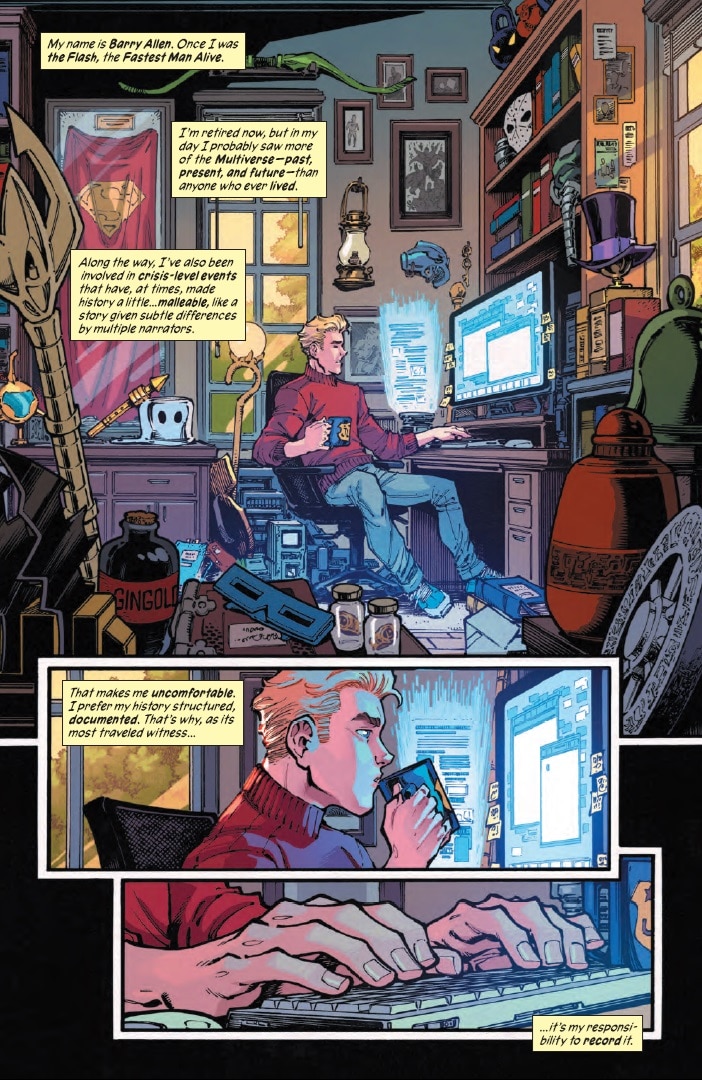
Then came all the citations, which was its own wave of research because not every Golden Age first appearance is an origin story and this is an in-universe timeline, not a list of publishing debuts. Let's take, say, the Golden Age Starman as one of many examples throughout the whole series. He first appeared in Adventure Comics #61, but that wasn't an origin story and he was shown having clearly been active in the DCU for a while. For proper in-universe historical context, then, his intro is backed up by the citation to the story or stories that best chronicled his actual in-universe debut—in Starman's case, not in Adventure but in 1985’s All-Star Squadron #41 and 1995’s Starman #9.
Wait, wait, wait. There's more. For issue #2, which covers the Silver Age to Crisis on Infinite Earths, I literally sat down and went through every single DC comic book published from 1956 to 1986—let me say that again, I literally sat down with every single comic—and wrote down every new character in order of publication. That became the foundation of part two of the timeline before being edited for space.
With issues #3 and #4, Dave shone—he did much the same thing for all the post-Crisis stuff, listing every major character and every (!) event, and I trimmed it all down accordingly.
There were certainly judgment calls to be made in the illustrated section so it didn't read like a thirty-page Wikipedia entry. While the timeline is in strict order, sometimes my proxy Barry Allen felt it was a better and more fluid reading experience to, say, combine a bunch of relatively contemporary superheroes or supervillains on one page so that he (I) could cover and represent as many characters as possible. In other words, the illustrated section is meant to be a reading experience while the backmatter is solid reference.
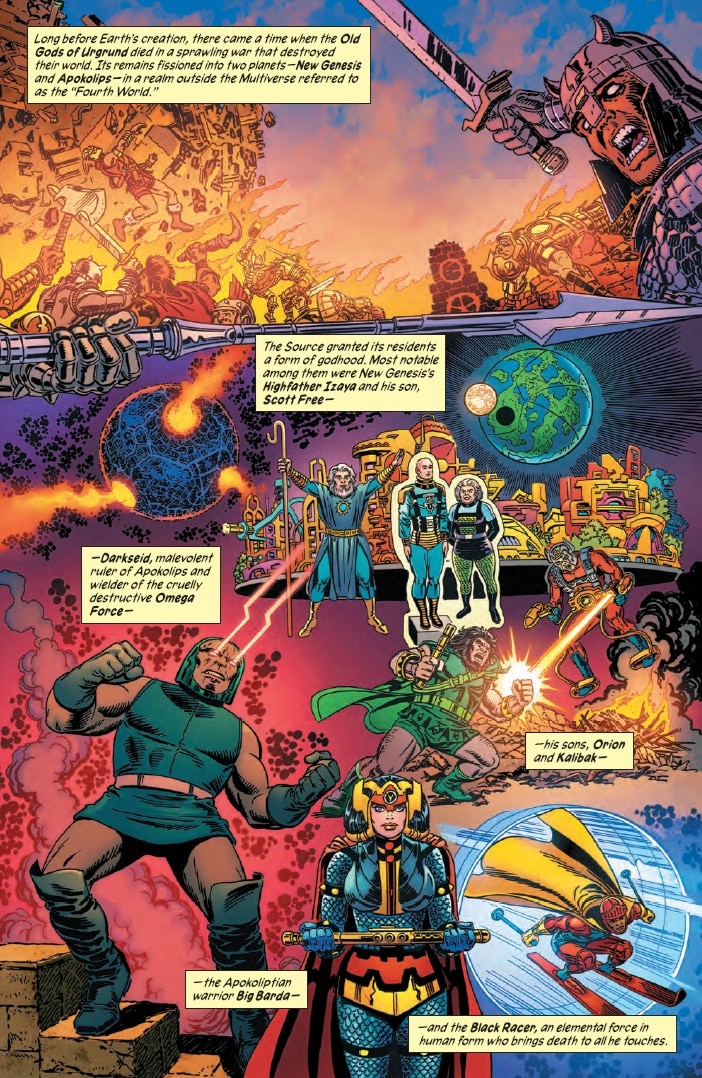
With so many reboots and Crises to account for, any complete account of DC history would be riddled with contradictions as histories have changed. What were the biggest challenges in that regard and how did you handle them?
Since most of those challenges were post-Crisis, I don't want to spoil too much for readers, but as any reasonable fan could tell you, there was just no way to make sure every single DC comic published between 1986 and today was still inviolate after so many reboots. The editorial team and I had to make many judgment calls. We did our level best to make them wisely, and I promise that absolutely none of them were made capriciously or without many, many rounds of discussion, and that our overall goal was to leave as much intact as possible. For instance, yes, Supergirl did die in Crisis, but as readers will see in issue #3, we were able to adapt her post-Crisis reintroduction to serve as her "back to life" story.
The JSA was another instance where I just had to, ultimately, use the Sword of Damocles to cut through all the rejuvenations they've enjoyed into something reasonable since their continuity was a mish-mash. And we all deserve a medal for finally figuring out Hawkman, Hawkwoman and Hawkgirl.
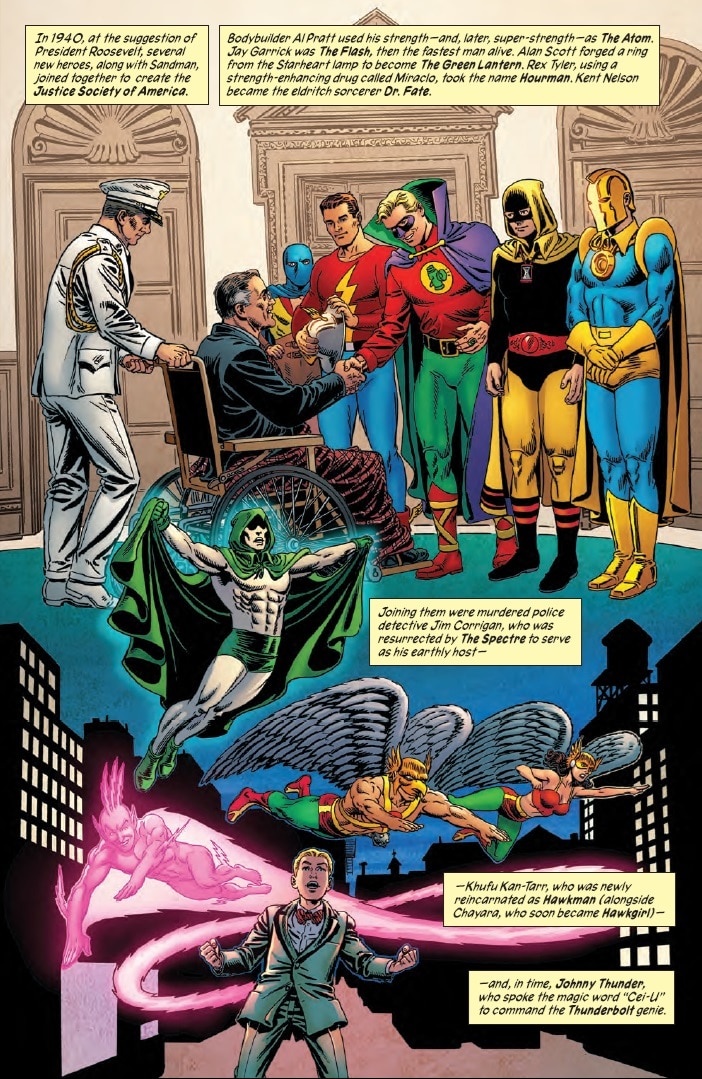
Even real-world historians are influenced by their own perspective when accounting for true events. As the new steward of DC history, how do you feel your own point of view has influenced this new account?
Fair question! I swear to God that, especially with DC editorial and Dave at my back, I worked overtime to not get too biased. That said, we implore readers to understand that space limitations are real, and that just because something seems overlooked doesn't mean it definitely didn't happen. And God bless our artists, all of whom had to sometimes draw fifty characters a page.
Since returning to DC a few years ago now, a lot of your work has been focused on the past—World’s Finest, Batman and Robin: Year One, your new Superboy-focused Action Comics run and now New History. What is it that keeps bringing you back to the past? And how do you go about contextualizing that era for a modern audience?
To be fair, maybe a bunch of the work, but certainly not all—I have no interest in becoming a "nostalgia act" and Justice League Unlimited is still the central nexus point of current DC continuity—but to me, the joy of using the past is in recontextualizing earlier eras and earlier ideas for the modern audience by coupling genuine character moments with some of the cooler forgotten artifacts of DC history. I don't want to just retell past stories—I want to find new ways into history that resonate today.
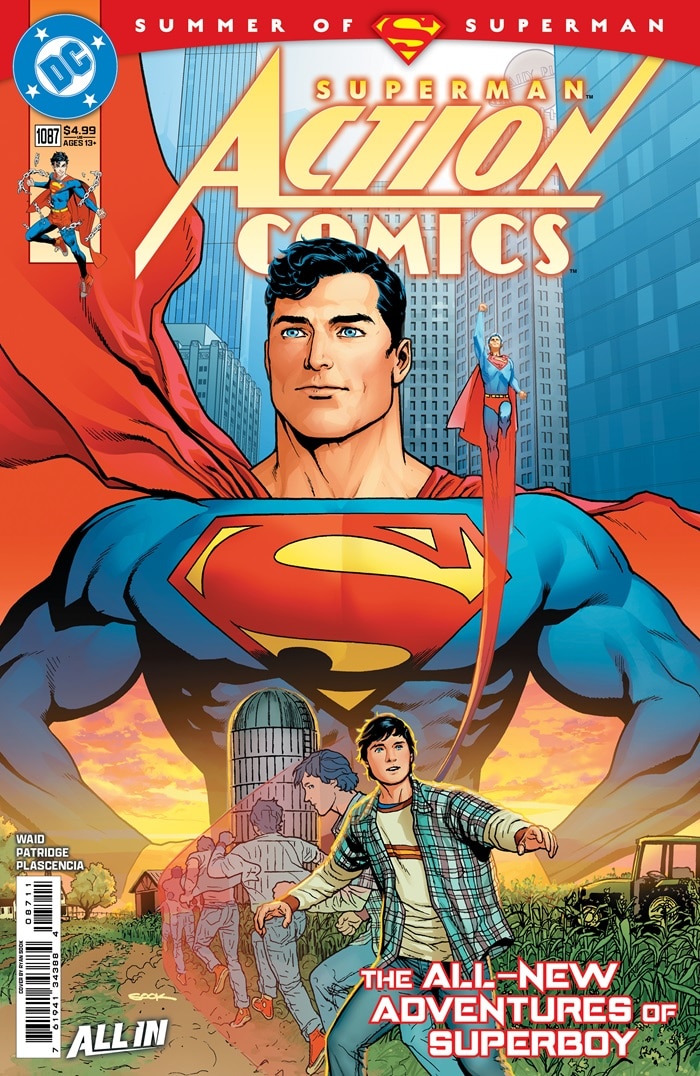
While we’re on the subject, let’s talk a little about this new Action Comics run. Superman history has been divided on whether or not there even was a Superboy in Smallville. What do you think including that chapter adds to the Superman mythology?
Confidence is a big part of what makes Superman who he is. He has his moments of doubt, every hero should, but by and large, he's seen so much in his adult life that he knows how to deal with 99% of the situations he encounters. Being able to explore his origins as a teenager, however, gives artist Skylar Patridge and me the opportunity to watch Clark figure out literally everything from scratch. He doesn't have all his powers yet, he's still working on refining a secret identity, he doesn't even yet have a costume that's not made out of stuff you can buy at a department store. And on top of all that, even Kryptonians have hormones, so we get to see Superboy act like a real teenager instead of a short Superman.
So, let’s talk about the one moment in the first issue of New History that surprised me more than anything else: the inclusion of the origin of Icon. After years apart, does this mean that Milestone has been reintegrated back into the DC Universe?
I'm grateful the Milestone founders have been extra-gracious to us, so there's more to come, but that's far from the last of the surprises you'll encounter. In every issue, we throw in a similar Easter egg or two, often introducing some DCU developments you've never heard of…until now.
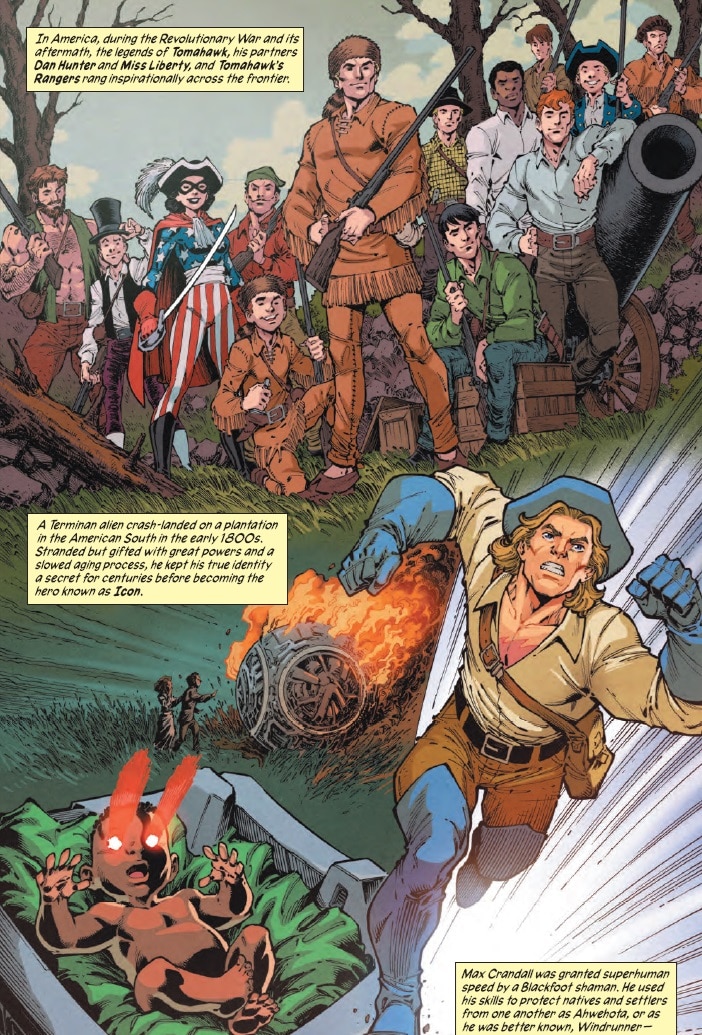
Finally, I’d like to talk about your mission statement in outlining the history of the DC Universe here. What is your greatest hope for this book to accomplish?
First, the goal is to entertain as well as illuminate, but it's also about creating an actual reference work. Because this is so much more comprehensive than the (most excellent!) original 1986 History series by Wolfman and Perez, it's designed to be an actual in-house resource, one essential to keep DC continuity consistent going forward!
The New History of the DC Universe #1 by Mark Waid, Todd Nauck, Jerry Ordway, Matt Herms and John Kalisz is now available in print and as a digital comic book.
